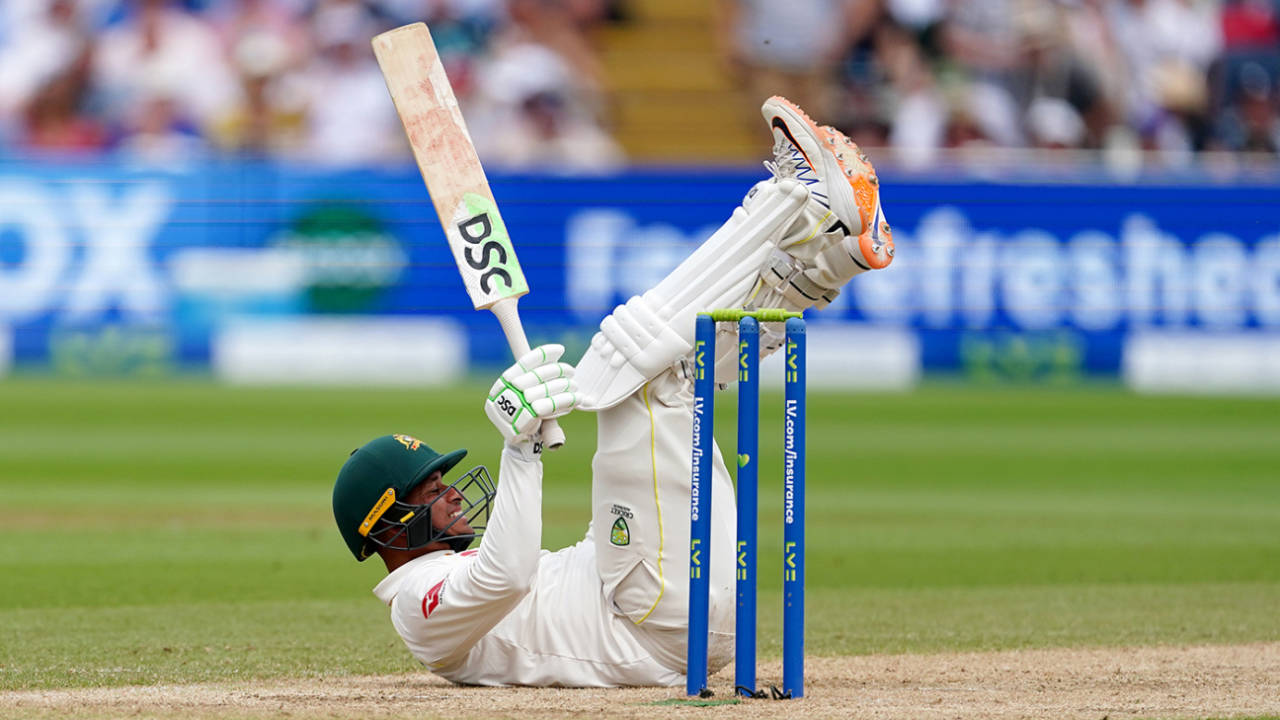I once asked former Australian Grand Slam-winning tennis player John Newcombe about serve-volleying on clay.
"Serve-volleying is a state of mind," replied Newcombe. "You have to be prepared to be passed from time to time."
This was an interesting reply. I thought, "That's like playing short-pitched bowling".
As a young cricketer you have to learn how to play short-pitched bowling. On reaching international level you have to have a plan for playing the short ball. Any plan, whether it's attacking or conservative, should involve a positive state of mind but it also includes keeping your eye on the ball.
If you take your eye off the ball it can be a painful experience, as Usman Khawaja discovered at Adelaide Oval, where West Indies debutant Shamar Joseph
hit him on the jaw.
Following
the tragic death of Phillip Hughes after he was hit by a bouncer at the SCG, Cricket Australia conducted a safety review. I asked CEO James Sutherland if that review included technique. The reply, "I don't know", staggered me. I later found out the review didn't include technique, which was alarming. Using the correct technique has to be the greatest single way to make playing the short-pitched delivery safer.
You should move inside the line of a bouncer so that if you miss the shot, the ball misses you. If you turn your head and take your eyes off the ball, you are hoping the delivery will miss you. It's never a good idea to put your trust in the ball's behaviour.
Between my brother Greg and I, we played 162 Test matches without being hit in the head by a short-pitched delivery. It's a tribute to our father, Martin, who taught us to always keep your eye on the ball.
The preferred method is easier if you play the horizontal-bat shot off the back foot as it's more natural to move into the correct position then. The odd player - former Australia batter Greg Blewett was one - can successfully hook off the front foot, but it's rare. It's virtually impossible to move inside the line of the delivery when playing the horizontal bat shot off the front foot.
It's not a boast but nor is it a coincidence that between my brother Greg and I, we played 162 Test matches without being hit in the head by a short-pitched delivery. It's a tribute to our father, Martin, who taught us how to play the short ball properly and to always keep your eye on the ball.
The temperament of a player is important when coaching how to counter the short-pitched delivery. It's no good telling aggressive players to avoid the short ball at all costs. They're more likely to say, "If the bowler thinks he's going to inflict damage, I'll show him."
Then there are cricketers who are good players of the hook but prefer to avoid the shot until their innings is established. It's also good to have a player near the top of the order - opener David Warner, for example - who can play the shot, so a bowler is then unsure about unleashing his bouncer. That makes life easier for the batters who follow.
From a bowling perspective accuracy is vital and it's best if the short-pitched delivery comes without an early warning signal. This made bowlers like Andy Roberts of West Indies and John Snow of England the two toughest opponents I faced. After receiving a number of accurate short-pitched deliveries from Roberts I mentioned to Australian fast bowler Dennis Lillee that it would be terrific to return the favour. Typical of Lillee's fast learning ability, his bouncer immediately improved.
A bouncer is a waste of energy, even at 150 kph, if the batter watches it harmlessly go by. The best bouncers force a batter to make a decision - do I hook, duck, sway out of the way, or defend?
Modern data indicates that a Mitchell Starc short-pitched delivery released at 144kph slows to around 108kph by the time it reaches the batter. When I was in the middle, I didn't recall a good bouncer being relatively slow.
No matter the pace of a bouncer, a batter requires a positive state of mind, good footwork, and to keep his eye on the ball to cope with an accurate short-pitched delivery.
Former Australia captain Ian Chappell is a columnist
